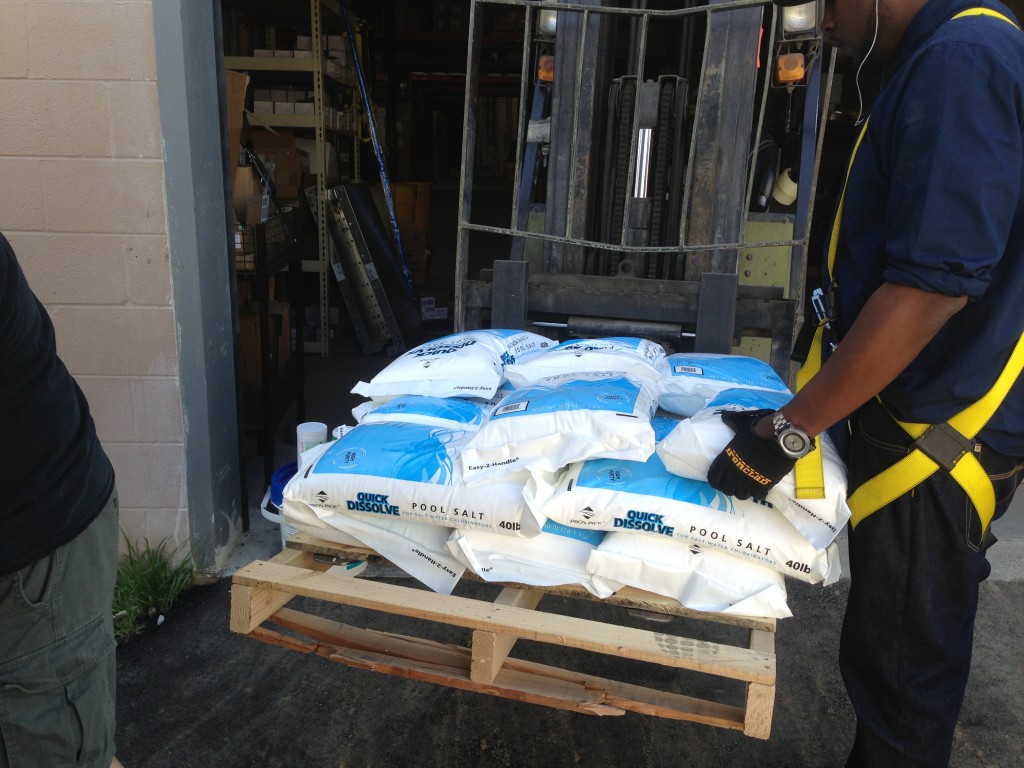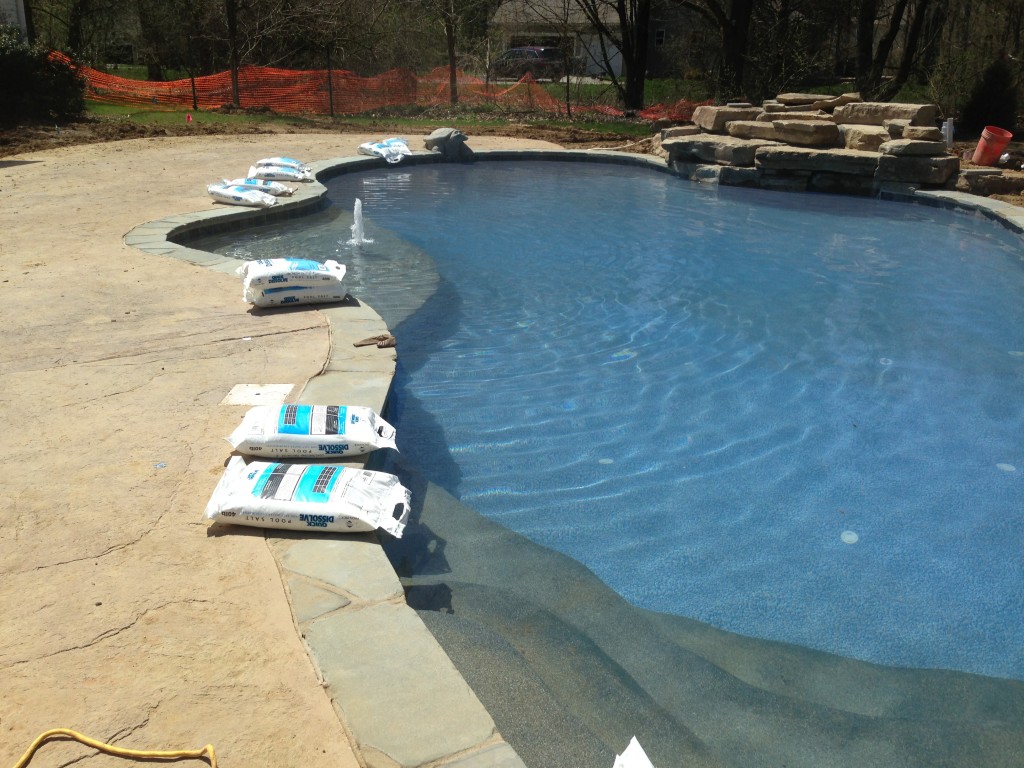At Ask the Pool Guy, we get asked all the time, “How do we add salt?” So let’s see what Al Curtis from Ask the Pool Guy has to say about this common dilemma.
When adding salt to a salt pool, it is critical that the salt is distributed evenly and that your circulation system is running. As the salt dissolves it can temporarily form a solution heavier than water. One thing that can be done is brush the salt so that it does not all form piles on the bottom of the pool. Things to think about: some chlorine generators must be switched off during the water salting process so be sure to check your manual.
Generally you want to add salt to the deepest end of the pool. The additional water in the deep end offers your pool walls the most buffer from the dissolving salt. It also offers proximity to a main drain. There is no specific method as to how to pour your salt in your pool, but we can recommend one process. If you are adding a large quantity at once, place each bag of salt side by side around the perimeter of the deep end. Then slice the underside of the front of each bag (carefully if you have a vinyl liner pool!). This allows what salt to spill in the pool- saving time and your back in the process. If you have a gutter pool, salt can be added to the surge pit.
When:
Always remember, salt should be treated like any other pool chemical and should not be added when it contains swimmers. It is best added when the pool is closed. After saying that, the main question is, when do you add additional salt to maintain the desired sanity in the pool? We often receive tech support calls with pool owners saying their generator isn’t producing enough or at all. We then usually discover the sanity level of the pool has dropped too low for the generators to function properly. This large swing in salt level not only results in wasted man hours but it can cause undue stress on the chlorine generator- that can potentially shorten the lifespan of the cell.
The best way to keep this from happening is to keep checking your salinity often and add it to part of your scheduled pool routine. This way, you are able to tell right away when salt is needed. Most chlorine generators have indicator lights to show when the salt is low, high or in the optimal range. There are also many digital meters on the market and we highly recommend them, or the simple salinity test strips. Either way, be sure to check your pool levels often. Calculate out how many pounds of salt are required to bring your pool to the desired ppm.
Call us at Ask the Pool Guy if you have more unanswered questions!


